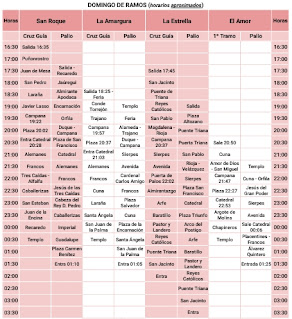Holy Week is one of the most important and spectacular religious celebrations in Spain. It is a festival that commemorates the Passion, Death, and Resurrection of Jesus Christ and is celebrated during the last week of Lent, culminating in Easter Week.
Processions and Brotherhoods: Holy Week in Seville is characterized by its impressive processions, organized by religious brotherhoods known as "cofradías." Each brotherhood represents a religious community and is composed of members who wear tunics and pointed hoods (capirotes) of specific colors. The brotherhoods carry religious floats representing scenes from the Passion of Christ, such as the Crucifixion and the Virgin Mary.
Nazarenes: Participants in the processions, known as "nazarenes," march in silence and solemnity, often carrying candles or wax candles and escorting the religious floats. Their attire is distinctive, with tunics and hoods that vary in color depending on the brotherhood they belong to.
Religious Floats: Religious floats are monumental wooden structures that depict biblical scenes. Some of the most famous floats include the Christ of Great Power and the Virgin of Hope of Macarena.
Music: Music is an integral part of the processions, and music bands accompany the brotherhoods, performing traditional processional marches that add solemnity and emotion to the event.
Itineraries and Routes: Each brotherhood has its own procession route, which can span the entire day or night. The processions traverse the narrow and picturesque streets of Seville, creating a unique atmosphere.
Schedule and Dates: Holy Week in Seville begins on Palm Sunday and culminates on Easter Sunday. During this week, daily processions take place, especially on Maundy Thursday and Good Friday.
Participation and Devotion: Holy Week in Seville attracts crowds of local spectators and tourists from around the world. The entire city is involved in the celebration, and religious devotion and fervor are evident at every step of the processions.
Cuisine: During Holy Week, Sevillian cuisine offers typical dishes such as "torrijas" (slices of bread soaked in milk and egg, then fried and sprinkled with sugar and cinnamon) and "pestiños" (fried pastries with honey).
Tips for Visitors: If you plan to attend the processions, it is important to dress appropriately and show respect for the participants and the religion. It is also advisable to arrive early to find a good spot to watch the processions.
Holy Week in Seville is a unique experience that combines religious devotion, art, music, and tradition. If you have the opportunity to visit Seville during this time of year, you will witness one of Spain's most impressive and emotionally charged celebrations.







































.png)
























